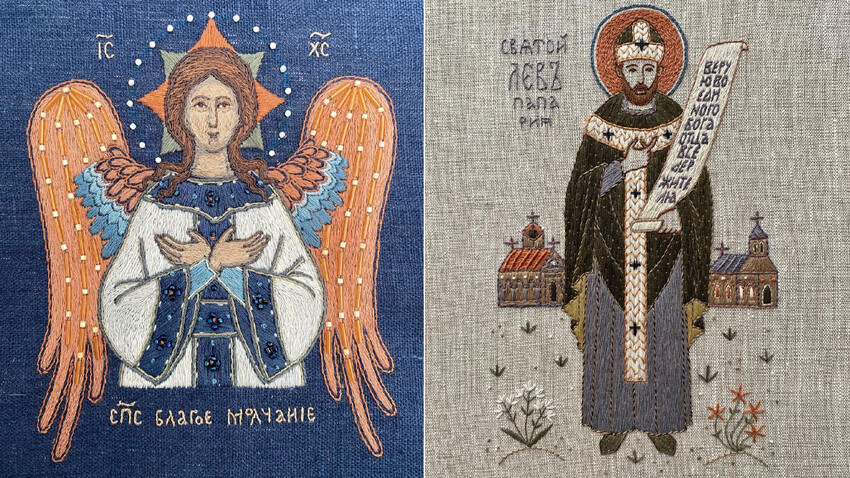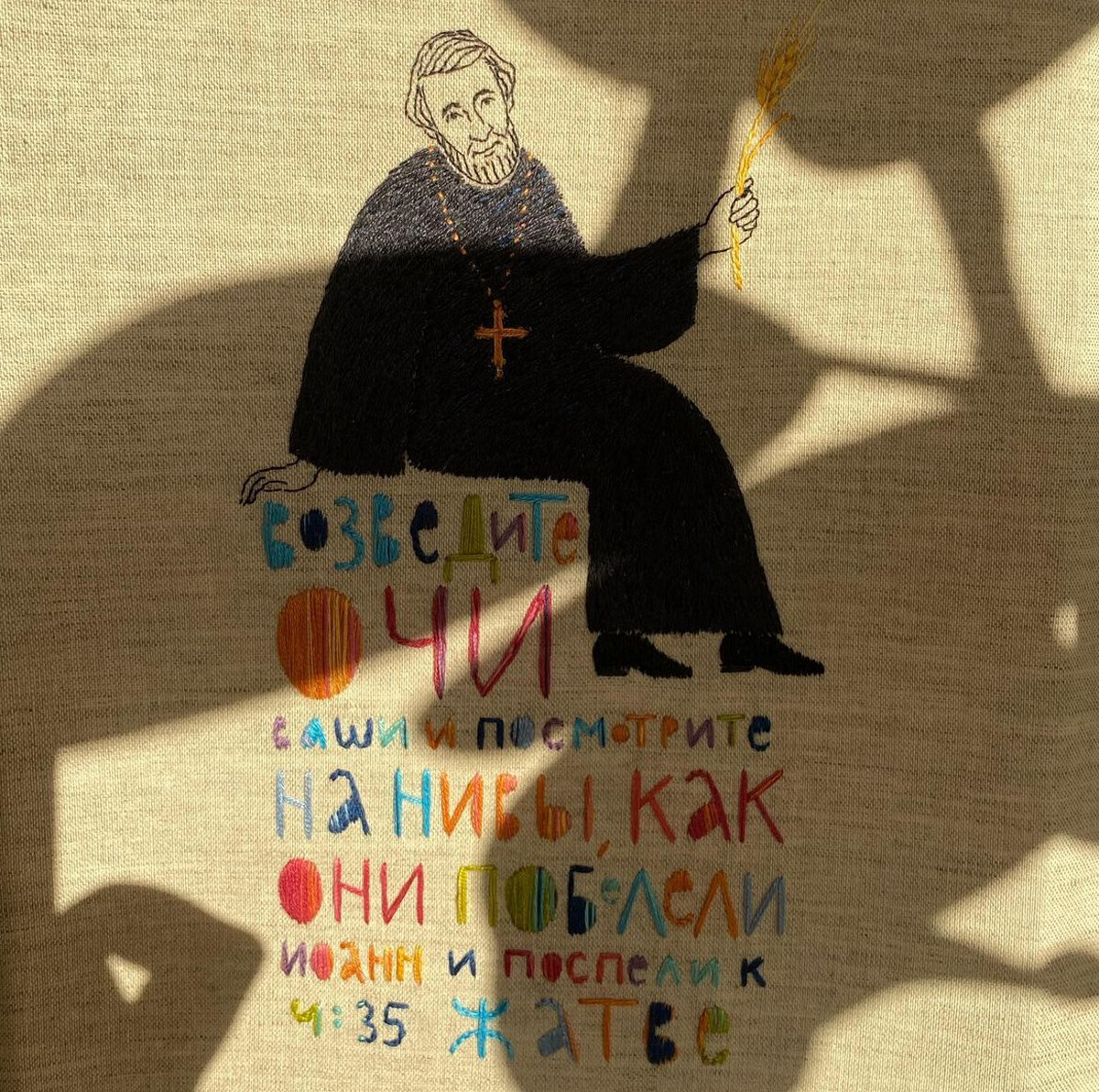
When Maria Cherkashina from St. Petersburg was 13, she asked herself the question: "What is the point of anything?" And she found the answer in a belief in God. She liked to read about the lives of holy men and their exploits. By 11th grade, Maria had made up her mind and decided to become an icon painter.
During her studies in the decorative textiles department of the Stieglitz Academy, the budding artist simultaneously took lessons at an icon-painting workshop. "I wanted to apply all my skills to icon painting. To the creation of harmonious compositions, sculptural figures and complex color schemes. The ability to work with source images, enormous visual training and even the banal ability to organize the working process: I received all this from my secular education," Maria says.
But, she was attracted by medieval art, most of all: Its colors, proportions and plenitude of meanings seemed ideal to Maria. "The Western and Russian Middle Ages remain my main source of inspiration. Like Matisse and the artists of the avant-garde, I too am enamored with icons. I regard their decorative, flat, planar language as ideal for religious art!" she says.
Maria is now 35. And, although she once dreamed of painting icons, the artist ultimately chose embroidery. "After the birth of my children, I switched entirely to embroidery, because, before you've managed to set out your paints and mix them, the baby will have woken up. And that's the end of your working day. Embroidery can be done lying down, standing up, in the train or even while breastfeeding!"
Although embroidery was something of an imposed choice for Maria, she approaches each work with the utmost seriousness. Before starting work, the artist views a multitude of examples and tries to introduce something new to classical subjects.
"In my embroidery of Blessed Maria of Diveyevo, I used an artwork by Pavel Filonov as the ‘pozyom’ [a conventionalized representation of the earth in an icon - Ed.], because they lived at the same period and Filonov himself was an eccentric. I also specially searched out a pattern of that period for the saint's dress," Maria explains.
Apart from icons, Maria also embroiders tapestries and straightforward sketches of religious subjects – churches and portraits. She wove the tapestry 'Andrew the First Called' when studying at the Stieglitz Academy. The prototype was a fresco of three apostles from an Italian museum.
And these embroideries show a portrait of a priest alongside his favorite quote from the Gospels, as well as the Feodorovsky Cathedral in Tsarskoye Selo.

"Do you not say, ‘In four months the harvest will be here’? I tell you, look up and see the fields ripe for the harvest."
Maria CherkashinaDear readers,
Our website and social media accounts are under threat of being restricted or banned, due to the current circumstances. So, to keep up with our latest content, simply do the following:
If using any of Russia Beyond's content, partly or in full, always provide an active hyperlink to the original material.
Subscribe
to our newsletter!
Get the week's best stories straight to your inbox